Upholding rights—and health
June 28, 2012
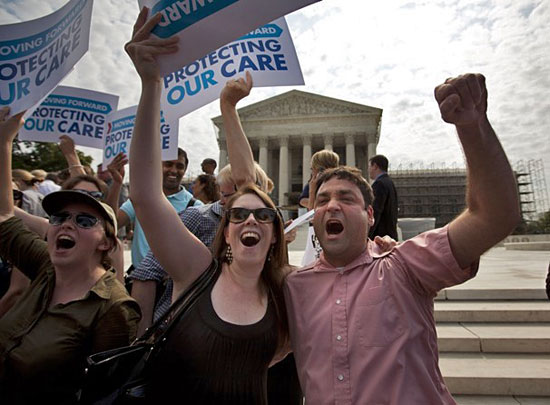
Cheers erupted at the Supreme Court after the justices released their ruling upholding the healthcare act.
The U.S. Supreme Court today issued a ruling that will rank among its most historic—a decision that, like those others, will echo through the decades because it’s about more than the letter of the law. It’s about essential human rights and decency.
The high court’s decision to uphold the Affordable Care Act will, quite literally, save lives—both from illness and the financial ruin that can often follow. The court’s ruling is a resounding affirmation that access to affordable, quality health care isn’t a privilege, but a right.
The impact of the Supreme Court’s ruling will be felt more profoundly here in Los Angeles County than almost anywhere in the nation.
More than 2 million of our fellow residents have no health insurance, a gaping hole in the safety net that unfairly affects the quality of their lives and the lives of those around them. Our schools, streets and workplaces are less healthy when fewer of us can afford health care. And when our strained public hospitals and clinics fill with the indigent and uninsured, the tax burden falls on the rest of us.
That’s why, for the past two years, Los Angles County has worked so hard to prepare for the federal heath care law, which according to a UCLA analysis, would provide access to coverage for some 80% of the county’s uninsured population when it goes into full effect in 2014.
One provision promises to provide 750,000 county residents with access to insurance through a new state exchange that was upheld by the court’s action on Thursday. Another, allowing states to expand Medicaid access (or Medi-Cal, as we call it in California), would provide coverage to more than 1 million county residents. Although the Supreme Court gave states the right to opt out of that expansion, I would hope that our state leaders would seize the moment and take advantage of this opportunity to protect our greatest asset—the people of California.
Already, Los Angeles County’s Department of Health Services has enrolled some 200,000 low-income county residents into Healthy Way L.A., the Medi-Cal-like program we’ve created, with support from the federal government, as a bridge to the new law. Beginning January 1, 2014, the federal government will underwrite 100 percent of the costs of that program for several years, eventually dropping to 90 percent.
For us, the Affordable Care Act also is about more than future results. As a result of the law, tens of millions of dollars in federal funds already have begun flowing to local community clinics and to grants for anti-obesity and anti-tobacco initiatives, such as Choose Health L.A. These crucial undertakings are no longer at risk, thanks to the Supreme Court decision.
The law, of course, will not instantly fix a problem so entrenched in our society. Some low-income residents will choose not to purchase insurance through the state exchanges. Others will be ineligible for public programs because of their citizenship status. Thus, the county—and its clinics and hospitals—will remain crucial to hundreds of thousands of people.
What’s more, while the legalities may now be settled, the politics of health care reform clearly are far from over in this election year. However, at the end of the day the court’s decision puts people first. We are the only industrialized nation that does not insure all of its citizens, and it’s high time we remove that blemish. As we move forward, I hope we can look beyond the partisanship and remember that this debate is not about blue and red, but about life and death.
Posted 6/28/12
Condom contest winner takes a bow
June 28, 2012
 Los Angeles County has an official flag, an official seal, an official web site and even an official song (“Seventy-Six Cities”). On Wednesday, it got an official condom.
Los Angeles County has an official flag, an official seal, an official web site and even an official song (“Seventy-Six Cities”). On Wednesday, it got an official condom.
Officials from the county’s Public Health Department announced the winner of its “Show Us Your Package” contest, which drew more than 500 entries and was aimed at raising awareness about the importance of condom use. The winner: a white, black and red wrapper with a black bow tie and the admonition “Suit Up.” Nine runners up also were selected, depicting, among other things, a cartoon map of L.A., a Hollywood Boulevard star with the word “SAFE” on it and the Hollywood sign spelling out the word “CONDOM.”
The Top 10 entries came from Santa Clarita, Glendale, Panorama City, West Hollywood, Van Nuys and other parts of the county. The grand prize winner, Adam Lyons, 32, of Hollywood, is the proprietor of Pop the Pixel, a West Hollywood design studio.
“I feel fantastic,” said Lyons, who moved to Los Angeles five years ago from San Francisco and said he entered the contest after seeing an ad on Facebook. “This is honestly the first design award for me, so it’s really exciting.” Three of his designs made it into the semi-finals.
Lyons explained that many of his clients are small local businesses with a strong sense of public spiritedness about Los Angeles, and he felt that participating in a public service campaign would let him share that enthusiasm.
“Being part of the community is something I really want to uphold and maintain,” he said. “I’m incredibly happy to be part of L.A.”
Prizes for the top 10 winners were donated to the contest. Adams will receive $750 in gift cards and a Toshiba 19” LED television with a built-in DVD. The runners-up each get $200 in gift cards. But all will receive invaluable exposure for their public-spirited artwork when the winning wrappers hit the streets in a few months. (Because each new condom wrapper requires FDA approval, there will be some lag time, says True Beck, project manager for the contest.)
All of the top 10 will appear for the next year on the wrappers of a million free condoms that will be handed out throughout the county by the Department of Public Health.
The design contest had a lively tone—its web site was LASexSymbol.com—but sexually transmitted disease is a serious issue here. Some 2,000 new HIV infections occur each year in Los Angeles County, and last year the department reported more than 47,500 new cases of chlamydia, more than 9,500 new cases of gonorrhea and nearly 1,800 new cases of syphilis.
The county distributes grant money each year to local health care providers to purchase and distribute free condoms, which help prevent such diseases. The contest—facilitated by a marketing firm and Boston-based ONE Condoms, which is the county’s wholesaler—was a small part of a larger centralization of STD prevention, in which three county programs already have been merged.
The contest rules stipulated that designs could not be obscene and that designers had to be residents of Los Angeles County. However, entries came from as far away as New York and Florida, as well as from surrounding counties. Last week, a panel of judges including gossip blogger Perez Hilton winnowed the submissions down to 50 semifinalists, which were then voted on by 185,000 members of the public on the contest web site.
Posted 6/28/12
Riding high as Expo hits Culver City
June 27, 2012
As the Expo Line started service to Culver City this week, Metro officials announced that overall rail ridership is on a roll in the county, with more than 100 million boardings projected this fiscal year.
Metro CEO Art Leahy said those levels haven’t been seen since World War II, and he credited the system’s expansion—along with more frequent trains, increased night hours and better maintenance—with drawing more riders to local light rail and subway lines.
The region’s rail expansion includes the Expo Line, which opened in April and averaged 11,347 daily boardings in May, its first full month of operation.
That’s low compared to opening month figures for other Metro light rail lines, including the Blue Line (19,600 in August, 1990) or the Gold Line (18,364 in August, 2003.) But Expo opened without two of its stations—Culver City and Farmdale, both of which rolled out the welcome mat Wednesday, completing the initial 8.6-mile stretch of the light rail line.
“With the opening of these two stations, we anticipate a substantial increase in ridership,” Metro spokesman Rick Jager said.
In Culver City, local bus lines have been reconfigured to make it easier for passengers to switch to the train at the station, which is expected to generate about 3,000 additional boardings a day.
Leahy said it takes time to build ridership on any new line. But he added that the growing reach of the rail system is making the train an increasingly desirable travel option in a car-clogged metropolis.
“You can go to Hollywood, the Valley, East L.A., Long Beach and now Culver City,” he said.
The record ridership numbers predicted for the fiscal year ending June 30 show the power of investing in the system, Leahy said, although he acknowledged that high gas prices are a factor, too.
And the system is still growing. Work on Expo’s second phase, to extend the light rail to Santa Monica by 2015, is now underway.
“We’re seeing the cumulative effect of what’s going on,” Leahy said. “We’re really achieving a critical mass.”
Watch dignitaries including Supervisor Zev Yaroslavsky inaugurate the new Culver City station in this video.
Posted 6/20/12
Blazing a path by the new Orange Line
June 27, 2012
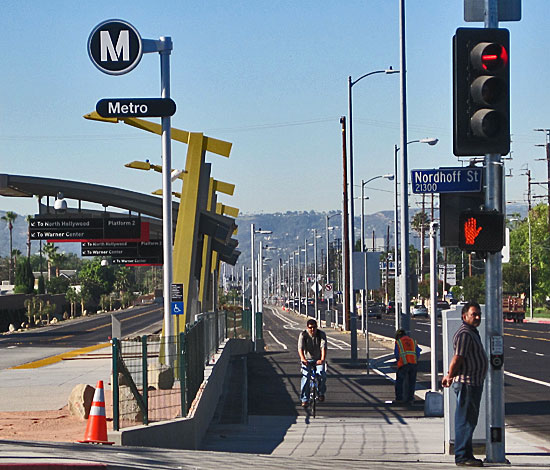
Even before it opens, the new Orange Line bike/pedestrian path is getting a workout. Photo/Dave Sotero, Metro
Bus passengers aren’t the only ones getting a slick new ride with this weekend’s opening of the Orange Line Extension.
The rapid transit busway features a dedicated bicycle/pedestrian path that’s being billed as the longest “transit-adjacent” bikeway of its kind in Los Angeles County. The path runs next to the new 4-mile northward extension of the Orange Line, which opens to the public this weekend with free bus rides on Saturday and Sunday, and connects with the original line’s 14-mile bikeway for a total of 18 miles. (By comparison, the newly-opened Expo Line bikeway is 6 miles long; it will grow to 16 miles when the line is completed to Santa Monica.)
Even before the ribbon is cut on the Orange Line Extension—which extends the popular busway northward from Warner Center to Chatsworth—cyclists and walkers have been giving the new path a workout. One project official counted 257 bicyclists and pedestrians out enjoying the new 4-mile stretch on a recent evening.
“I use it every day,” said Manny Samuel. “It’s safer for me [than the street] with all these cars.”
For Samuel, the bikeway even makes possible an old-fashioned midday break that most modern-day Angelenos can only dream of. “I’m going home for lunch,” said Samuel, who works at a nutrition research company, as he prepared to pedal from Canoga Park to Woodland Hills.
Dan Flores, out walking on a recent sunny day, said he’s already hitting the path for an average of six or seven miles a day—on foot or on bike. It’s great exercise—and a nice way to beat high gas prices. “I have a big giant truck that costs me $10 just to turn it on,” he said.
For teenagers like Anthony Winn and Gianni Darienzo, the new bike path has emerged as the preferred route to that time-honored summer destination: the mall. Compared to getting a lift in the car, “riding a bike’s better,” Darienzo said, as he and Winn returned from a trip to the Westfield Topanga Shopping Mall.
Most of the wide, asphalt-surfaced path has separate, dedicated lanes for bicyclists and pedestrians. Still, there are some “multiuse” areas in which walkers and cyclists will share space. Wider-than-usual 6-foot curb ramps also will allow cyclists and pedestrians to get on and off the path more easily, especially when it’s crowded.
Landscaping remains nonexistent along much of the path, but several hundred trees, such as incense cedars and Chinese flame trees, are set to go in soon, along with drought-tolerant plants including trailing rosemary and fortnight lilies.
The overall bus project is coming in ahead of schedule and under budget by $61.6 million, having used just $154 million of the $215.6 allocated. The acceleration was made possible, in large part, by the passage of Measure R by county voters in 2008, said project manager Hitesh Patel. Patel said the bicycle/pedestrian path is only part of a host of healthy and environmentally friendly elements incorporated into the new busway, which also has some solar-powered lighting panels, bioswales to naturally filter runoff water and even recycled construction debris from the 405 Project, which has been crushed and used as an underground base.
Those who want to ride the new busway extension can do so for free on Saturday, June 30, and Sunday, July 1. (The free rides are being offered only on the extension portion of the Orange Line running from Canoga Park to Chatsworth.) There also will be family-friendly festivities from 10 a.m. to 4 p.m. on Saturday at the Canoga Park and Chatsworth stations.
Those include a group ride with Valley Bikery, which sets out from the Canoga station at 1 p.m. and finishes at the Chatsworth station.
Nathan Baird, bicycle coordinator for the Los Angeles Department of Transportation, said he expects to see cyclists using the bike path—and the Orange Line itself—in a variety of ways.
“Having the bike path right next to the transit gives you a whole slew of options,” he said.
And the sheer 18-mile length of the path is a major plus, he said.
“The miles are important,” Baird said. “It connects across the entire Valley.”
Those connections eventually will go even further.
In the not too distant future, he said, cyclists will be able to start on the Browns Creek bike path in Chatsworth, connect with the Orange Line bikeway, travel along dedicated bike lanes through stretches of Los Angeles and Burbank and end up on the L.A. River bike path, which in turn will open up new connections stretching all the way to Long Beach.
As Patel, the project manager, puts it: “It’s going to be a wonderful asset for the San Fernando Valley…and for bicyclists, runners and nature lovers across the county.”
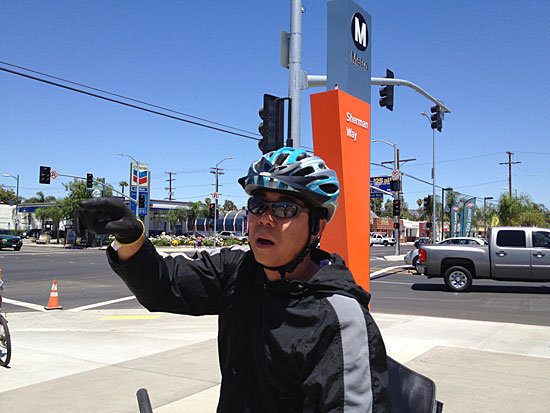
Manny Samuel, who lives in Woodland Hills and works in Canoga Park, uses the bikeway to ride home for lunch.
Posted 6/27/12
A July debut for L.A.’s Grand Park
June 27, 2012
After two years of construction, the first segment of Los Angeles’ new Grand Park is set to open in the final days of July, a milestone in the revitalization of downtown that will be celebrated with a nationally-promoted dance celebration.
The first two blocks of the park—from Grand Avenue to Hill Street—will be dedicated by civic leaders on Thursday, July 26, near the spectacularly restored Arthur J. Will Memorial Fountain. But the big coming out party is scheduled for Saturday, July 28, with a public inaugural coinciding with National Dance Day, an event founded by producer Nigel Lythgoe, who co-created the hit TV show “So You Think You Can Dance.” Tonight, Lythgoe is scheduled to promote the Grand Park dance celebration on his Fox network show.
“The park gives us a lovely setting to encourage all members of the community to get up, move and get healthy at the same time,” Lythgoe said in a statement.
The entertainment will be presented by The Music Center, which was recently selected by the Board of Supervisors to oversee park operations during its first three years. “This event will be a great example of the type of fun, interactive and entertaining activities Grand Park will host for years to come,” said Thor Steingraber, vice president of programming at The Music Center.
Also involved in the opening-weekend events will be The Dizzy Feet Foundation, a non-profit group founded by Lythgoe and other dancers and actors to “support, improve, and increase access to dance education” in the U.S. The entertainment is scheduled to include a performance by Cirque du Soleil. (See full L.A. County announcement here.)
When completed, Grand Park will span four blocks—from Grand Avenue near the Music Center to Spring Street, across from City Hall. The final two blocks of the park are scheduled to open in late summer or early fall. Only in recent days has Grand Park come into full public view as work crews removed the dark sheeting from a warren of chain link fences. Besides the fountain, the park will feature an event lawn, gardens and walking paths.
Posted 6/27/12
“Levitated Mass” rises to the occasion
June 24, 2012
With crowds, speeches, and even a rare appearance by its normally reclusive creator, Michael Heizer’s “Levitated Mass” finally opened on Sunday at the Los Angeles County Museum of Art.
“This is a monument to our own time and our own place and our own aspirations as people,” exulted LACMA Director Michael Govan, noting the months of public spectacle that accompanied the execution of the immense sculpture. “It does make the impossible possible.”
Surrounded by a geometric field of decomposed rock, the artwork—a 680,000-pound hunk of Riverside granite positioned atop a 456-foot-long concrete trench—basked in the L.A. sunshine. Birds perched on it. Palms swayed beside it. At one end, a Unocal billboard and a 99 Cent Store sign bedecked its horizon. Awestruck visitors gawked at the rock’s scale, called friends from beneath it and pretended to hoist it, creating, in the words of Curbed LA, an instant tradition of “boulder holding.”
Privately, Govan called it “an amazing, contemplative oasis in the middle of the busy metropolis.”
Heizer, dressed in a cowboy hat, cowboy boots and shades, had his own take as the crowd mobbed the Nevada earth artist, begging for autographs: “It isn’t a golf course, that’s for sure.”
Heizer conceived the sculpture 43 years ago, but didn’t complete it until he visited a granite quarry in Riverside County decades later and found the boulder that is its centerpiece. (Or, as Heizer joked in an interview on Sunday, “It found me.”)
“The Rock,” as it came to be known, captured Southern California’s imagination as it moved to LACMA from Jurupa Valley, inspiring block parties, traffic jams and marriage proposals. The 105-mile journey along surface streets was a feat not only of engineering but also of bureaucratic ingenuity, as the teardrop-shaped megalith traveled a circuitous route through four counties and 22 cities.
Maria Chong-Castillo, a public works deputy for Los Angeles County Supervisor Zev Yaroslavsky, was singled out during the dedication for troubleshooting the dozens of permits needed for The Rock’s move. (Terry Semel, co-chair of the LACMA Board of Trustees, told the audience that when the project was first proposed, “we thought this is either the best idea ever or it’s a total screw-up!”)
The project—which had been scheduled to open last November—was repeatedly delayed by demands for bonds from municipalities who feared their infrastructures couldn’t handle the load.
Those fears didn’t materialize. Still, as a thank-you, LACMA offered free admission to its galleries from now until July 1 to residents of the ZIP codes through which the rock passed during its 11-day journey (click here for the list).
Among the out-of-town dignitaries was Mayor Laura Roughton of Jurupa Valley, where the boulder was blasted out of the side of a mountain. “I love it!” said Roughton. “I went back to the quarry after The Rock left, and it seemed kind of lonely without it, but it’s probably getting the respect now that it deserves.”
Heizer was bemused at the hoopla. Born in California but living now in the Nevada desert, he was absent during The Rock’s highly publicized journey, arriving in L.A. only afterward to oversee the assembly of the piece. “We knew it was going to attract some attention,” he said, but to him it had more to do with the culture of Los Angeles than with his vision.
“L.A. is an automobile culture, and what you saw was just the biggest automobile in town goin’ down the road,” Heizer joked. “That’s why you got all excited. You just love cars.”
On Sunday, however, it was all about the art, as Govan, Semel, Yaroslavsky, Heizer and Los Angeles Mayor Antonio Villaraigosa cut a bright red ribbon (with some help from Govan’s young daughter), and a throng of hundreds mobbed the artwork.
Earlier public response had been a mix of admiration and shock at the piece’s privately financed price tag, a reported $10 million. As the boulder made its stately progress, clad in shiny white plastic shrink-wrap, some predicted it would be a masterpiece while others compared it to a 340-ton frozen turkey.
“People have asked me over the last few months how you justify dedicating these resources and this much space to something like this,” Yaroslavsky said to the crowd on Sunday. “But this going to become, along with Disney Hall and ‘Urban Light’ and the Hollywood Bowl, among the iconic views and visions of our region. . . Everyone will see this work in a different way.”
On Sunday, the crowd was mostly impressed, and most in attendance agreed that photos and TV coverage didn’t do justice to the impressive scale of the piece.
“It’s like a meteor!” gasped 5-year-old Adam Davis, clutching a book on Lego Star Wars Legos. “It’s like a meteor that fell down into the earth!”
“It’s gonna add a lot to the community,” agreed his father, Darren Davis, who lives near the museum. “It’s just amazing to have such a persistent piece of history for everyone to enjoy.”
Photo gallery below by Los Angeles County photographer Martin Zamora.
Posted 6/24/12
Traffic officers ramp up, too
June 21, 2012
When it comes to L.A. traffic jams, they’ve seen it all—from the post-game Dodger blues to the most limousine-studded Academy Awards ceremony.
Now a hardy band of Los Angeles traffic control officers is going where they’ve never gone before: into the heart of the marathon construction project that will shut down Wilshire ramps to the 405 Freeway for an entire year. Their hand gestures and force of personality will be all that’s standing between the motoring public and utter gridlock at some of the most notorious intersections in the world.
To which Sgt. Kimmi Porter says: no problem.
“I think it’s going to work fine,” says Porter, of the city Department of Transportation. “We do our job and we do our job well. The first day might be a bump in the road, but people get used to it. They won’t like [the congestion] and they’ll find another way to go.”
Porter speaks from experience. A 26-year veteran who for more than two decades worked traffic control on the Westside of Los Angeles before moving to an administrative job downtown, Porter can tell you what to wear to direct traffic at the Oscars (that would be your “Class A” uniform with tie and long-sleeve shirt) and how local sports teams are drawing (after Chris Paul came to town, “we worked more Clipper games. I think we worked them all this year.”)
A sold-out Dodgers game (especially one with a giveaway) is an “A game,” and you never know what to expect.
“On any given night, it can go either way. They’re fine going in, but when they come out, they’re excited if they win. The windows are down and they’re screaming.”
And she knows at a glance how things will go at the Hollywood Bowl depending on which acts are on the bill.
“The Philharmonic crowd, they’re coming to hear the music and leave. They come on time; they want to leave on time,” she says. “The rock crowds, they come in limos. They may not come for the first act. They’re more of an unpredictable crowd.”
You might think that traffic control officers, with their high visibility, would be lightning rods for L.A. motorists’ aggravation, but usually that’s not the case.
“We just get a small percentage that become irritated, frustrated or annoyed,” Porter says. “For the most part, the drivers obey and they comply with all the hand signals.”
The first of the Wilshire ramp closures start at 10 p.m. Friday, with work on the westbound onramp to the northbound 405 and the northbound 405 off-ramp to westbound Wilshire. This first round of ramp work is expected to take 90 days; after that, closures between 14 and 90 days are expected as workers demolish and rebuild each of the eight ramps over the course of the year. (Advance work to prepare Sepulveda Boulevard as an alternate route begins tonight, Thursday, June 21, at 10 p.m. Details of all the upcoming closures are here.)
There will be 37 traffic officers deployed at key intersections, under the command of West Area Captain Tom Villarreal.
He says his people are being reminded to be “very respectful” of motorists struggling to get through the area.
“I think during peak hours it will be very heavy, very congested, and there might be some frustrated people,” he says. “This is going to be a big undertaking.”
In addition to patience, Porter says, the officers will need to bring their “command presence” to the job—force of personality, along with the “halt” gesture and a few steps forward, usually are enough to deter the most impatient motorist itching to jump into the intersection on a red light.
Over the years, Porter has developed a certain empathy for what drivers have to endure—and has witnessed how they eventually end up coping with any obstacles thrown in their path. Westside drivers navigating the long-running Wilshire ramps work will most likely follow the same pattern, she says.
“I would not say that the Westside driver is different than any other driver,” she says. “I just think with the closure there’s going to be some frustration, of course, because they want to get home or go to work. The detours are going to delay them. I think what’ll happen is people will become frustrated in the beginning. But what people tend to do is they’ll find other routes. They’ll stay away.”
In those early days, though, if you’re passing through the area and spot a traffic control officer working an intersection, you might want to give a friendly wave (and not the other kind of hand gesture our traffic can inspire.)
Because, as Porter points out: “If we weren’t around, we’d be missed.”
Posted 6/21/12
Rocking a crowd at LACMA
June 20, 2012
As Michael Heizer’s “Levitated Mass” prepares for its big reveal this weekend, the Los Angeles County Museum of Art has been scrambling. The grass keeps wearing out. The parking garages keep filling.
“We’ve had to do extra maintenance,” says LACMA Director Michael Govan, “because of all the people hanging out on the grounds, picnicking.”
Make no mistake, Govan is not complaining. In fact, he says, he would celebrate if he weren’t so busy because for the first time in six years, museum attendance broke the 1 million mark this fiscal year, soaring to an estimated 1.3 million visitors.
LACMA’s attendance as the fiscal year approaches its June 30 finish is still a far cry from that of such institutions as The Louvre and the Metropolitan Museum of Art in New York, where the crowds exceeded 9 million and 6 million, respectively. Locally, it’s still less than half the turnout that the Dodgers get in a season (although it’s twice this year’s Lakers attendance).
Still, only 51 museums in the world broke the 1 million mark last year, according to The Art Newspaper, a cultural publication that does an annual attendance survey. “It’s a rarefied zone,” Govan notes.
More importantly, this year’s crowds didn’t just stem from the fleeting boost of a single, blockbuster exhibition. Rather, they built from a steady stream of smart, high profile shows in new permanent spaces such as the Resnick Pavilion and the Broad Contemporary Art Museum. (Click here for a 10-year look at LACMA attendance.)
“LACMA has broken a million before, with shows like the [1999] Van Gogh exhibition and ‘Tutankhamun Returns’ [in 2005],” notes Govan. “But those shows were one-time occurrences, and different in the sense that after they left, the attendance went right back to where it was.”
That default attendance when Govan arrived in 2006 from New York’s Dia Art Foundation was between 600,000 and 650,000. Two years after he took the helm, however, the Broad Contemporary opened, as did Chris Burden’s now-iconic entry piece, “Urban Light.” Attendance shot up by more than 200,000, maintaining its new base even as the Resnick Pavilion was planned and constructed. In 2010, when the Resnick opened, the figures rose by another 100,000.
Since then, the upward trajectory has continued. During the last 12 months, visitors have flocked not only to works by popular artist and director Tim Burton, but also to less mainstream shows such LACMA’s exhibition on California design.
The surrealist show, “In Wonderland”, was a big draw in recent months, and Burden’s room-sized miniature freeway, “Metropolis II”, has had more than 200,000 visitors alone since it opened in January.
And, Govan adds, visitors are sticking around.
“One of the things I’m especially proud of is that the average stay six years ago was 45 minutes, and now it’s two hours and 45 minutes,” he says. “So when you multiply that by the attendance, the use of the museum has increased extraordinarily.”
Attendance, of course, isn’t everything. “There’s the quality of the program,” Govan says. “There’s how you change art history. There’s the idea of showing Los Angeles artists who had distinguished careers and deserve more recognition. That’s part of our role, too.”
Challenges also persist—among them the difficulty of attracting tourists. Despite Los Angeles’ buzz as a dynamic arts center, out-of-towners are so often overwhelmed by the sprawl that they give up on the parks, cathedrals and museums that would be natural tourist destinations in other big cities.
The Tim Burton show—mobbed by 5,200 visitors a day when it debuted at New York’s Museum of Modern Art—only got about 2,700 visitors a day when it moved to LACMA. And art museums in Chicago, Boston and even San Francisco routinely outdo our attendance figures.
Govan says some of the difference is logistical: San Francisco’s renovated de Young Museum, for instance, sits next door to a wildly popular science museum. But a big part of it, Govan says, is tourist traffic.
“When I got here only 11% of our audience was a tourist audience—by far the lowest number of any museum of our kind in the world. Usually, you get a 50-50 mix, or at least 60-40.”
LACMA’s tourist component has risen since to about 21% of attendance, he says, and should continue to improve. A planned subway stop at the museum should help, as should the eventual addition next door of a big, new movie museum being jointly developed by the Academy of Motion Picture Arts and Sciences and LACMA.
“But you’ll never see the giant numbers until L.A.’s tourism numbers rise,” Govan says.
In the meantime, Govan expects the museum’s solid, incremental gains to continue, and not only with must-see installations such as “Levitated Mass,” which opens Sunday at 11 a.m.
Visitors on that day will not only be able to finally experience “The Rock,” but also check out the many other delights at LACMA—the “Urban Light” forest of street lamps, the tiny whizzing cars of “Metropolis II,” the rare and beautiful Latin American codices and treasures at “Children of the Plumed Serpent: The Legacy of Quetzalcoatl in Ancient Mexico,” which is part of Govan’s mission to take L.A.’s understanding of Latin American art to the next level. (“Everybody knows about ancient Egypt,” says Govan, “and not enough people know about ancient Mexico.”)
Next year’s docket will include a retrospective on the work of L.A. sculptor Ken Price that will go to the Met in New York after it leaves here and a show built around eight of Caravaggio’s sumptuous, crowd-pleasing paintings.
The goal, Govan says, is to get to 1.8 million visitors by the end of this decade.
But, he adds, “What I’m after is not one thing that’s everything. It’s a collection of things that create critical mass—the friendly entrance, the outdoor space, the restaurant and bar, the jazz and film programs.”
As for the beleaguered grass, he laughs: “These are good problems to have.”
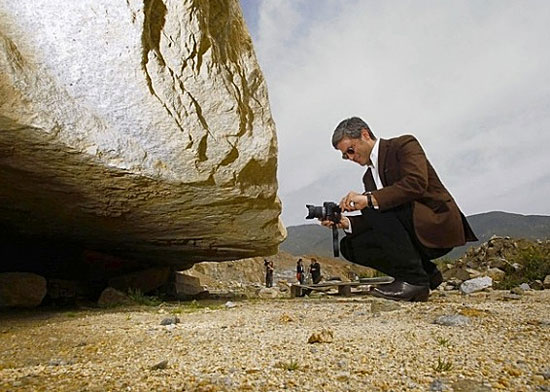
LACMA chief Michael Govan with The Rock at its earlier home in Riverside County. Photo/Los Angeles Times
Posted 6/21/12
Vote for L.A.’s official condom
June 20, 2012
One entry has the Hollywood sign spelling out the word CONDOM. One depicts a prophylactic stretched over Los Angeles’ iconic City Hall. Some have palm trees. Some have movie themes. Some are in Spanish. One features the Capitol Records building with the caption, “Let’s Get It On.”
The contest to select an Official L.A. Condom—or at least its wrapper—is off and running. A panel of judges is winnowing the entries, and, starting this week, the public will be able to vote online.
“We had more than 300 entries the last time I checked,” says Department of Public Health Project Manager True Beck. “On June 21, the semifinalists will be posted, and then the public will pick the top 10.”
Winners will be announced on June 26.
The contest, entitled “L.A.’s Next Sex Symbol,” is intended to promote safer sex and discourage the spread of HIV, syphilis, gonorrhea and other sexually transmitted diseases. A similar contest several years ago in New York generated widespread publicity.
The issue is serious—some 2,000 new HIV infections alone occur annually in Los Angeles County—but the contest’s tone has been anything but somber. The tag line is “Show Us Your Package,” and judges include the colorful gossip blogger Perez Hilton. Earlier this month, buff men in muscle shirts were on hand at the Downtown Art Walk to do condom demonstrations on popsicles and bananas.
Beck says the idea is to keep the conversation “light and sexy and fun”, and engage the public. The number one vote getter will win a television and $750 in gift cards, and the nine runners-up will receive $200 in gift cards.
The real prize, however, will be bragging rights: The 10 top designs will appear for the next year on the wrappers of a million and one free condoms handed out all over the county by the Department of Public Health.
Click here to see the entries and vote from June 21-26 for your favorite semifinalist, or go to LASexSymbol.com.
Posted 6/20/11




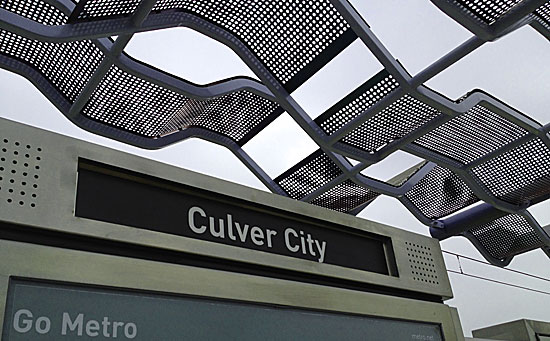
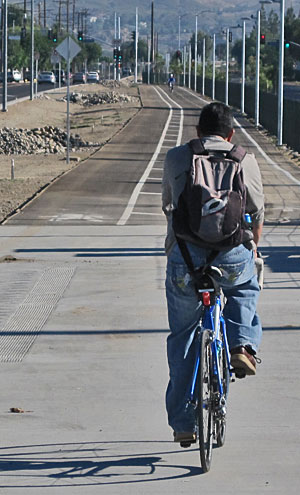
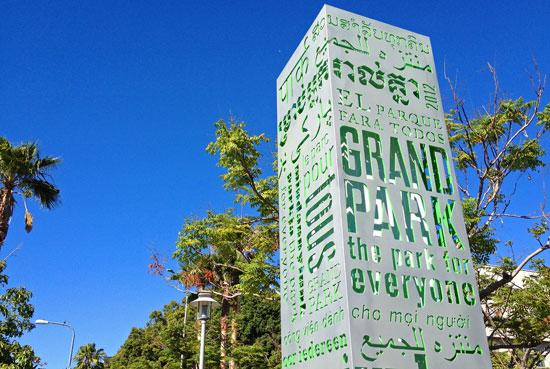
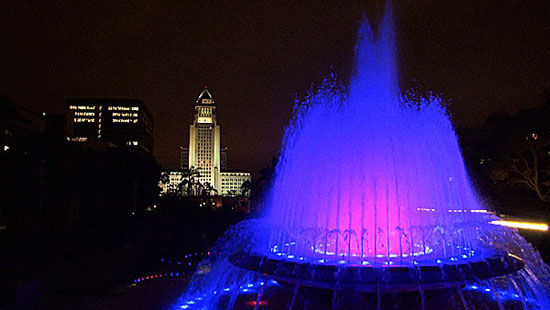
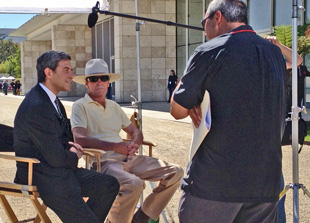
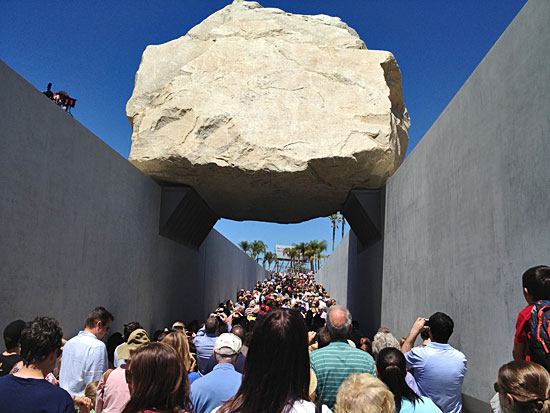










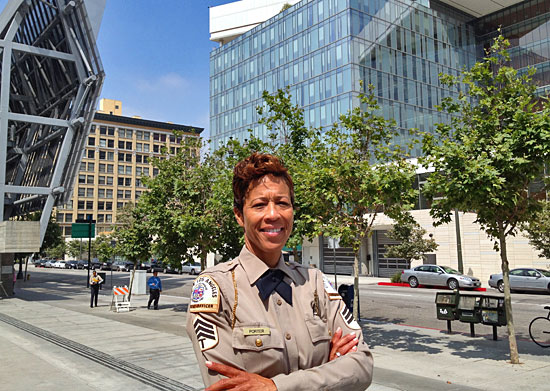
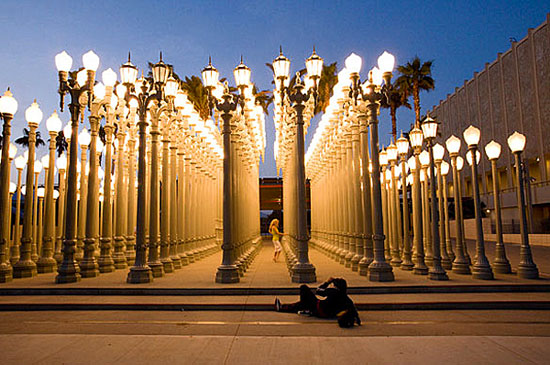
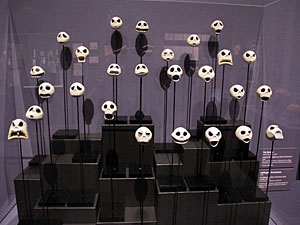
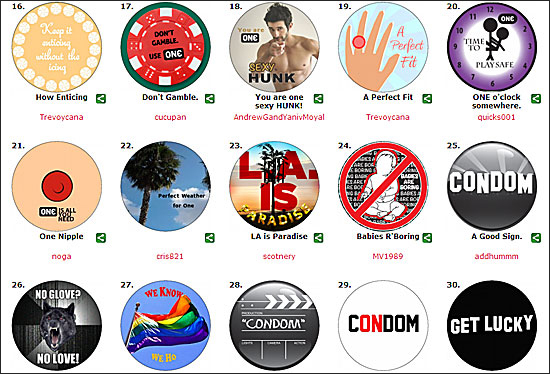






 Check for the latest closure information
Check for the latest closure information








